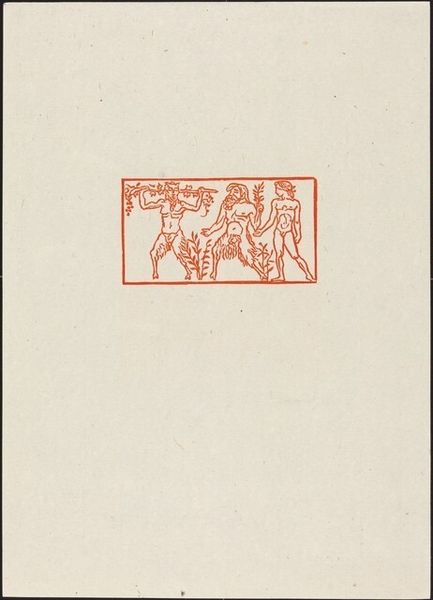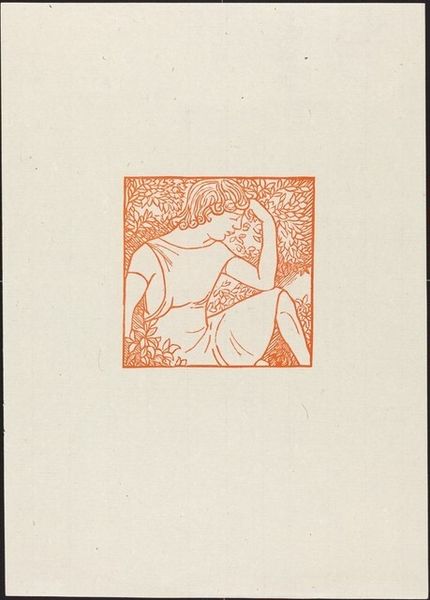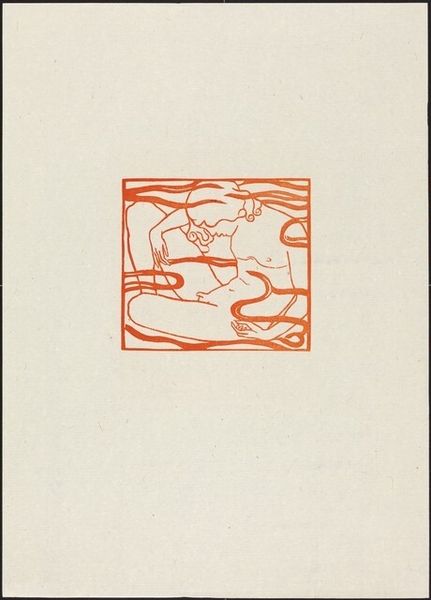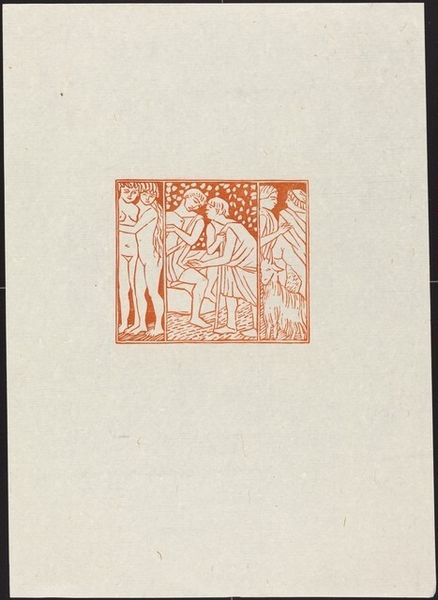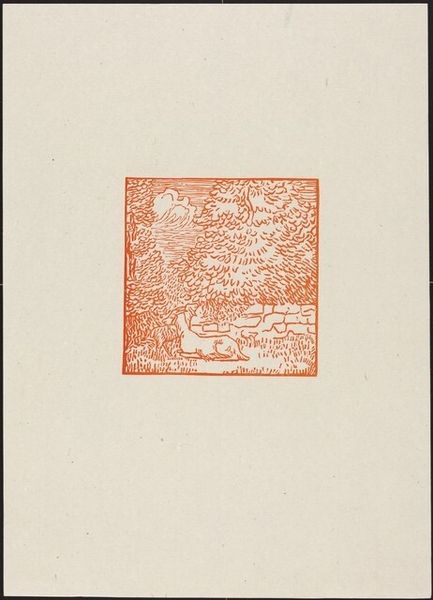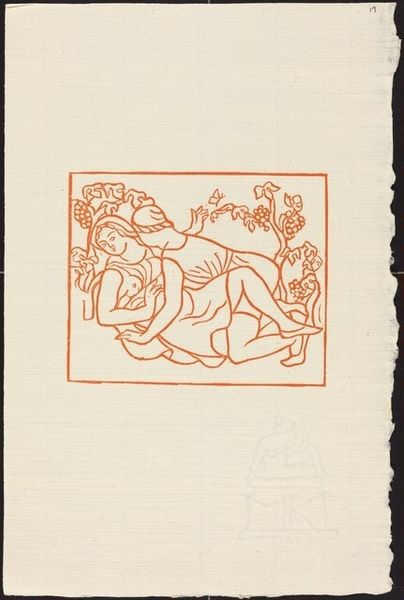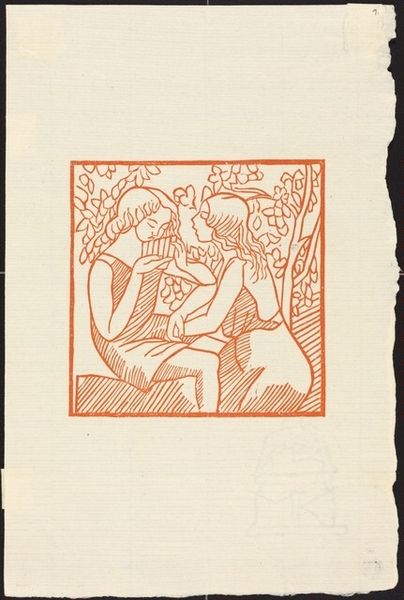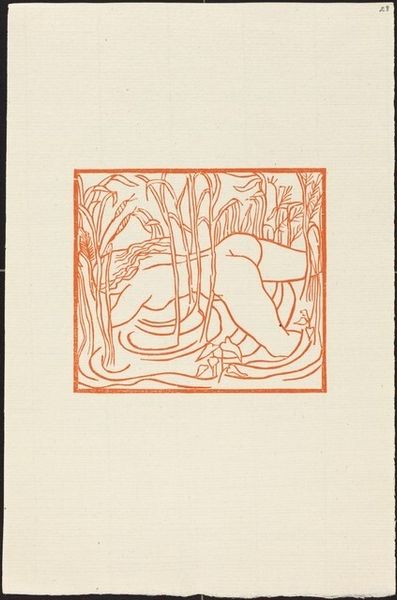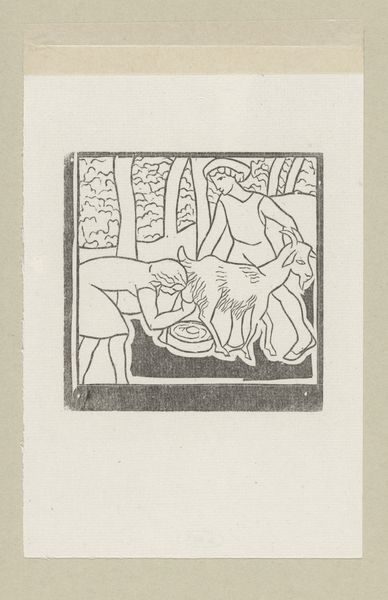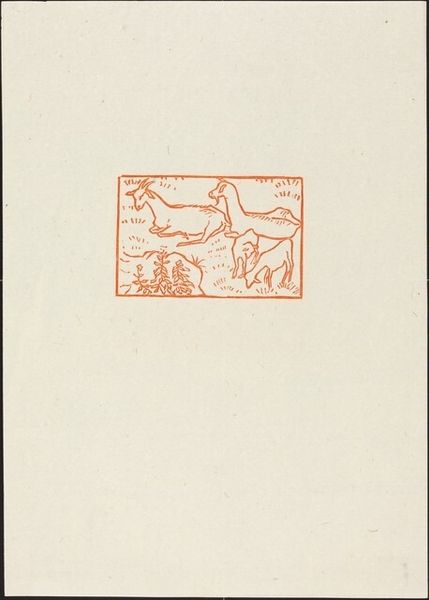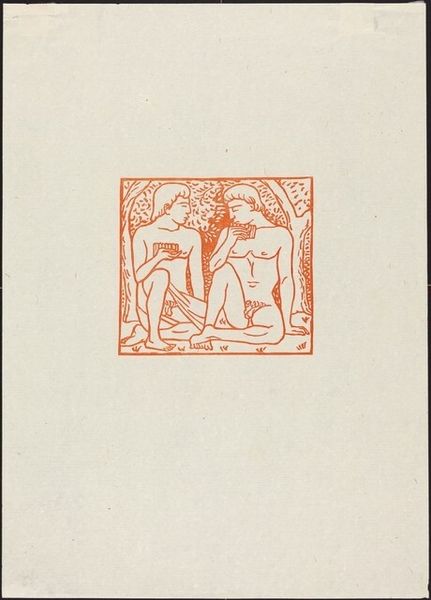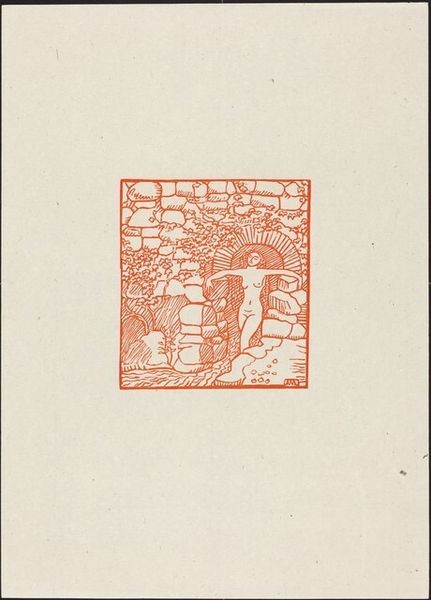
Second Book: Daphnis Driving Home His Flock (Daphnis ramene ses betes a l'etable) Possibly 1937
0:00
0:00
drawing, print, linocut, woodcut
#
drawing
# print
#
linocut
#
landscape
#
figuration
#
linocut print
#
woodcut
Copyright: National Gallery of Art: CC0 1.0
Curator: Aristide Maillol’s "Second Book: Daphnis Driving Home His Flock," possibly from 1937, presents a charming pastoral scene in the form of a linocut print. The reddish-brown ink against the paper creates a warm, earthy feeling. What are your first impressions? Editor: It feels intentionally rustic, almost childlike in its simplicity, and I find that somewhat surprising for a print that comes this late in Maillol's career. The scene seems very contained by the bordering square. I'm curious, what informed Maillol's turn to printmaking? Curator: It’s fascinating, isn't it? We see here Maillol embracing the accessible medium of linocut, suggesting an interest in expanding his reach beyond sculpture to a broader audience. Printmaking also has a history as propaganda--was he perhaps thinking of new audiences and patrons in the tumultuous decades leading up to the Second World War? This work depicts a return to a pastoral idyll. Editor: Absolutely. Considering the rise of fascism during this period, one wonders about the political implications, consciously or not, of idealizing a rural existence. Maillol depicts Daphnis as nearly nude which links this image to notions of classical beauty but does the mode of printmaking speak to an anxiety about creating "high" art? What considerations of the viewer are being brought up when discussing the work of art versus the artwork as easily reproducible product? Curator: It is an interesting contradiction at play. By using linocut and woodcut print, Maillol’s work seems to blur the lines between fine art and the reproducibility inherent in the medium. There is something to be said about the means of artistic expression when the world seems on the brink of disaster, however lovely. Editor: These themes resonate deeply, creating a dialogue about simplicity, escapism, and the role of art amidst cultural anxiety and shifts in media and consumption. I appreciate how the apparent simplicity reveals a depth of commentary, underscoring the complexities within art and society. Curator: Agreed. Exploring Maillol’s artistic choices here through the lens of production and the cultural contexts allows us a much richer appreciation.
Comments
No comments
Be the first to comment and join the conversation on the ultimate creative platform.


